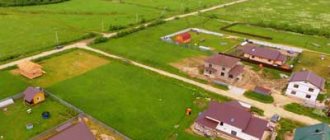Availability of housing for a person is an important condition for his normal existence. The real estate objects that the State Committee is interested in include: premises, buildings, land. Consequently, information about the structure and functions of this institution may be useful for every resident of the country.
You can start with what GKN is and what this abbreviation means.
Definition and Description
Cadastral registration is carried out in relation to technical data about real estate. For example: the area of the object, its location, etc.
GKN
GKN stands for state real estate cadastre. It may be noted that the word “cadastre” is of Latin origin, and its meaning is expressed as “register”, “enumeration”. Some people confuse the GKN and the State Tax Committee, but the decoding of the latter sounds like “Gosnarkontrol”, which has nothing to do with the cadastre.
Unified State Register
This abbreviation is made up of the initial letters of the following words: unified state register of rights.
The Unified State Register contains information of a legal nature. The institution collects, records and systematizes data on real rights to real estate and transactions in relation to it.
What is the difference
Thus, one can observe the existence of two interconnected institutions, which, however, act independently of each other.
Tasks and functions
Initially, the collection of information about real estate was implied as the main goal of the State Property Committee to ensure state control over the completeness of payment of land and property taxes. With the development of the structure, it became possible to use data to protect the interests of owners, that is, to provide information for legal proceedings.
To conduct various types of real estate transactions, the availability of reliable data about it is an important condition. Information from the cadastre not only serves as confirmation of the existence of an object, but also allows you to learn about its important characteristics.
The Unified State Register aims to collect data both on the property rights of citizens (current, previously registered) to real estate, and on other transactions carried out in relation to the property. In addition, the state real estate cadastre provides information to interested parties. These measures are aimed at ensuring objectivity and transparency of trade transactions.
Receiving data
Two structures independent of each other are the State Tax Committee and the Unified State Register, and the difference between them lies in the nature of the information that they accumulate in their databases.
The State Cadastre will provide the papers necessary to familiarize yourself with the technical characteristics of the object.
The Unified State Register will allow you to obtain a document that will serve as confirmation of officially registered rights in relation to real estate. The register provides information to all interested parties regarding the owners of objects.
Examples of official papers
An extract from the Unified State Register is a printed official form of this institution. The document is certified by the seal and signature of the registrar. The rules for maintaining the Unified State Register state that its form is unified throughout Russia.
A similar paper from the State Property Committee (extract) includes 6 forms, each of which has a specific designation (KV-1—KV-6). For example, images and descriptions of a plot of land contain forms KV-2 and KV-3. If the allotment is fully or partially encumbered in the form of an easement, this is indicated by the KV-4 form.
What methods are used to obtain information?
There are several ways to obtain information from the State Tax Committee:
- During a personal visit to Rosreestr (rarely used, since the government body has an agreement with the MFC).
- When contacting the territorial department of the MFC. An individual or legal entity needs to submit an application and wait for a response. The request can only be made (in some cases) after payment of the state fee. The finished document can be received in person or by email or fax in the form of an extract.
- You can order paper on the official website of Rosreestr. Here you can choose a convenient delivery method and type of certificate. After payment, the citizen can receive it in electronic or printed form. There is no need to register on the portal.
- You can receive a printed or electronic document after contacting the State Services. This is an all-Russian portal for the provision of state and municipal services. After simple registration on the site, an individual or legal entity (also an individual entrepreneur) will have access to a list for selection. After paying for the statement, you can receive it in printed or electronic form.
What information does the State Property Committee contain?
It is impossible to call cadastral registration of real estate any special innovation for Russia. Similar measures have been taken before.
Normative base
Information from the State Property Committee is taken into account on the basis of the provisions of the Constitution, codes of the Russian Federation (Civil, Forestry, Urban Planning, Housing, Water), as well as other regulations. For example, more active work on collecting and systematizing information began to be carried out after the adoption of Federal Law No. 221-FZ “On the State Real Estate Cadastre” on July 24, 2007, which regulates, among other things, the recording of information in the State Property Committee database.
Objects
The cadastre is based on information about land resources. It contains information about the state borders of the Russian Federation (external and internal), specially protected areas, and pipeline networks.
Accounting objects include:
- buildings and premises,
- plots of land,
- objects of unfinished construction.
Only real estate located in Russia is taken into account.
Principles of conduct
A unified technology is used to account for objects throughout the Russian Federation.
The principles of maintaining the State Control Committee can be expressed as follows:
- comparability of data entered into the state cadastre with other information (information databases),
- keeping data up to date,
- openness of information.
Information from the State Property Committee can be obtained by anyone who is interested in it, that is, any person. The exception is data containing secrets that are protected by law. The network of MFCs (multifunctional centers), which are present in many large cities, simplifies the process of obtaining information for citizens.
Authorized body
UFRS - the decoding of this abbreviation looks like this: Office of the Federal Registration Service. The institution has been reformed. Instead, a structure was created called the Office of the Federal Service for State Registration, Cadastre and Cartography. There is a short name for it: Rosreestr.
We note the following: if until the beginning of 2021 the State Property Committee was a separate institution, then from that moment it resumed its activities as part of the Unified State Register of Real Estate (USRN). The information bases of the Unified State Register and State Property Committee, which previously operated independently of each other, were merged. Now they are under the control of Rosreestr.
This is the executive structure that is responsible for keeping records of objects and providing information. In addition to responsibilities for state registration of real estate and transactions with such, this body resolves issues of cartography and geodesy.
Registry structure
The State Control Code has three main sections.
Structure:
- A real estate register is a systematic list of property data.
- The cadastral files section contains information about those documents on the basis of which data was entered into the information base.
- Cadastral maps are diagrams of land plots designed to reproduce information about objects in text and graphic descriptions.
Information resource
The State Property Committee contains an extensive database of information containing unique and complementary characteristics of real estate.
The first include:
- type of object (plot of land, house, premises, unfinished construction project),
- cadastral number, date of registration in the State Property Committee database,
- information regarding its boundaries.
For a room there is information about the number of the building in which it is located, the floor and a description of its location. The area of real estate is required to be specified.
The list of additional information includes:
- the address of the object and the number assigned to it previously,
- information regarding rights to the object,
- information about the owners, which includes information about the postal address or email address of the owner,
- information about encumbrances,
- information on cadastral value.
Of particular importance is that the category of land and the permitted use of the site are indicated.
For a house, in addition to its purpose, you can additionally find out the number of floors and the material used for the external walls, and the cadastral number of the plot on which it was built.
If the object of registration is a land territory, then the cadastral numbers of the buildings present on it (if any) will be indicated.
GKN information resource
It works on the Rosreestr website. Since its launch in 2015, it has proven its worth as it provides many benefits. Here are just some of them:
- Very fast search - the data will be on the screen in a couple of minutes;
- Uninterrupted 24/7 operation;
- Possibility of remotely receiving information by email;
- Obtaining information about the cadastral number and category, area and other data, having only the address of the object;
- Relatively reasonable price for the service.
Since the information is updated every five years, it is important to check that the GKN information is current. By the way, if a person took an extract, say, a year ago, but the state, according to plan, re-evaluated it and entered new data into the State Tax Code, then the document will have to be taken again, because the previous version is already outdated and cannot be used in court or anywhere.
There are some inconveniences associated with this, but thanks to the GKN information resource, they can be resolved much faster than before.
Receipt procedure
You can obtain information from the State Property Committee by contacting Rosreestr or the MFC.
Extracts
The application is submitted on paper or electronically (using the official website of the structure). The document contains only the information requested. The issuance of an extract requires payment, and a certificate of cadastral value will cost the applicant free of charge.
An extract from the Unified State Register, disclosing issues of legal ownership in relation to real estate, will be a document that is necessary in the event of transactions with such (sale, etc.). In order to receive it, the applicant can contact Rosreestr, MFC, or the government services portal. You must indicate the purpose of obtaining information and pay the state fee.
You can receive an extract in person or through a representative. The second option requires the presence of a properly executed power of attorney.
Cadastral passport
A document containing the most important characteristics of the object can be obtained from Rosreestr, MFC. The territorial department of the BTI can also provide issuance.
A cadastral passport can only be issued to the owner of the property based on the provided identification document - a passport, and sometimes SNILS.
Obtaining information from the State Tax Committee online
Modern technologies allow you to have access to information of interest online. Rosreestr is no exception. On the portal of a government agency, anyone can obtain general information about the object. However, only non-private information is presented there.
- To obtain information that is secret, you must leave an advisory request. State Control Committee employees study the data attached to the request, as well as its validity, and provide information within the established time frame.
Request for information from the State Property Committee on the Rosreestr portal
To obtain information from the State Property Committee on the Rosreestr portal you must:
- Go to the public services portal, select the administrative body - Rosreestr.
- Then, by going to his website, in the “Services” tab, select the “Reference information on real estate online” function.
- The search for objects is carried out using several data, including address. You must enter the address of the object of interest in the field.
- In the information window, the user will be presented with data about the object of interest - a site or a capital construction project.
To obtain additional information reflecting individual characteristics of the object: footage, information about the owner, etc., you need:
- Go to the public cadastral map of Rosreestr, located in the “Services” tab.
- Enter the address details of the site/capital construction site.
The advantage of this method is:
- No queues;
- Information is provided free of charge;
- Information is provided instantly.
Why doesn't the information match?
There are many reasons for the discrepancy between cadastre records and actual data.
Alteration
In addition to changes in the physical characteristics of an object, errors can occur in the process of recording information itself. There may be inaccuracies that were made by employees of the cadastral service, for example: due to inattention, as a result of a typo (misprint) during incorrect arithmetic calculations. It is possible that the records were compiled on the basis of documents provided by the applicant that contained inaccurate information.
It is typical for such cases that the State Committee for Control takes measures to correct identified deficiencies independently, notifying the owner of the property. The period for making changes is five days.
Algorithm of actions
Changes in the physical characteristics of a property are another good reason to update your State Property Registration records. They are made on the basis of a written application, which must be submitted to the cadastral service.
In addition to identification documents, you will need:
- copies of the certificate of ownership (or the lease agreement, if it is concluded for a period of more than five years),
- boundary plan (for land area),
- technical certificate of the building.
We also need documents that serve as the basis for changes. For each individual case, additional paperwork may be required.
The State Control Committee considers the received request and makes one of the decisions:
- entering updated data into the database,
- suspension of changes (in case of certain inconsistencies) for a more thorough study of the situation,
- refusal.
The person who submitted the request must be notified of the decision made. As for the last point, the refusal can be appealed in court. If the decision is positive, the period for changing the data is no more than 5 days from the date of its adoption.
Validity periods of documents
Despite the fact that the legislation does not establish clear validity periods for extracts received from the Unified State Register and the State Property Committee, they may be limited by the institutions where these papers must be provided. This is explained by the fact that legal information may lose its relevance if the owner of the object changes.
Please note that sometimes the validity of the certificate is limited to one day.
The usual validity period for an extract is 1 month, but experts recommend using documents that have been received no more than 2-3 days. This is especially important for trade or transfer transactions with real estate.
As for the State Property Committee, you need to understand that the law establishes the obligation for the relevant services to re-evaluate the cadastral value of real estate every five years. Of course, after it is carried out, the changed information is displayed in the registry.










